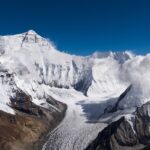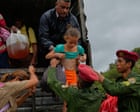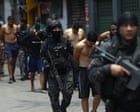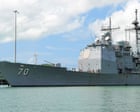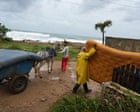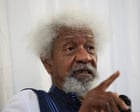Reports of families trapped by floodwaters in Jamaica, as hurricane moves on to threaten Cuba’s second-largest city
Welcome to our live coverage of Hurricane Melissa as it travels through the Caribbean.
Melissa is heading for Cuba’s second-largest city, Santiago de Cuba, after making landfall in neighbouring Jamaica as the strongest cyclone on record to hit the Caribbean island nation.
Hurricane Melissa made landfall in Jamaica’s on Tuesday as a category 5 hurricane. It is the strongest to lash the island since record-keeping began in 1851. The storm lost some power crossing Jamaica’s mountainous terrain, but remains a powerful Category 4 storm, according to the National Hurricane Center.
The hurricane is now making a toward Cuba. It could make a second landfall there as early as midnight, bringing winds of between 140 and 145mph.
Cuba’s president warned citizens the storm could be “one of the most severe – or possibly the strongest” ever to hit the island. “We want to emphasise … the magnitude of this event,” said Miguel Díaz-Canel, urging Cubans not to return to their homes from shelters.
Desmond McKenzie, deputy chairman of Jamaica’s Disaster Risk Management Council, said the south-western parish of St Elizabeth “is under water” – and has sustained extensive damage.
Aid agencies and disaster relief charities are preparing to deploy. They will start operations across Jamaica and elsewhere in the Caribbean at speed as soon as weather conditions improve enough to safely do so. The Red Cross has said it expects about 1.5 million people to be directly affected by the disaster, set to become the largest in Jamaica’s history.
The extraordinary intensification of Hurricane Melissa is likely to be a symptom of the rapid heating of the world’s oceans. Melissa is the fourth storm in the Atlantic this year to undergo rapid intensification of its wind speed and power. This sort of intensification has been linked to the human-caused climate crisis, which is causing oceans to become hotter.









